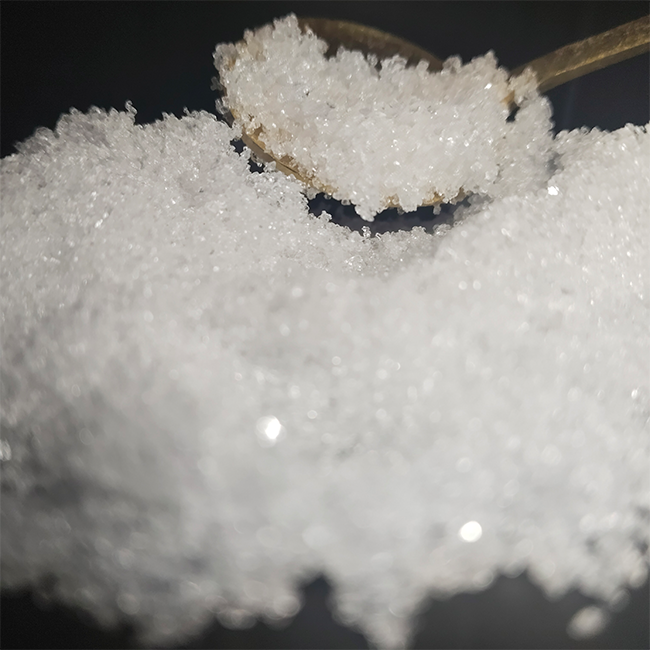Comparison of preparation techniques for Sodium phosphate monobasic

Comparison of preparation techniques for Sodium phosphate monobasic
Sodium phosphate monobasic (CAS 7558-80-7), as an important inorganic acid salt, is widely used in food, medicine, industry and agriculture. The choice of its preparation technology directly affects product quality, production cost and environmental benefits. In this paper, we will compare the various preparation techniques of Sodium phosphate monobasic.
1. Technology Comparison
(1) Raw material cost and availability
Extraction method: rely on wet phosphoric acid and sodium chloride, raw material cost is low, but need to add additional extractant (such as tributyl phosphate), increasing reagent consumption.
Neutralization method: using thermal phosphoric acid or food grade phosphoric acid, the price of sodium hydroxide/sodium carbonate is affected by market fluctuations, the overall cost is moderate.
Compound decomposition method: requires high purity calcium dihydrogen phosphate and sodium sulfate, raw material purchasing restrictions and higher costs.
Ion exchange method: phosphoric acid and resin are the main consumables, and hydrochloric acid/sodium hydroxide is needed for resin regeneration, with high long-term operation cost.
Emerging process: Wet phosphoric acid needs pretreatment, urea cost is low, but the process has requirements for the purity of phosphoric acid.
(2) Process complexity and energy consumption
Extraction method: multi-stage extraction and reverse extraction operation is complex, solvent regeneration requires additional energy consumption, but the product purity can reach 99.3%.
Neutralization: simple process, but need to accurately control the pH value (4.2-4.6), evaporation and concentration of high energy consumption.
Complex decomposition method: single-step reaction, but need to deal with by-products, the yield is only 79.1%, energy consumption is concentrated in the crystallization process.
Ion exchange method: high degree of automation, but frequent resin regeneration, acid and alkali consumption increases operating costs.
Emerging process: two-step reaction, urea phosphate synthesis requires temperature control, alkali reaction conditions are mild, overall energy consumption is low.
(3) Environmental protection and waste disposal
Extraction method: organic solvent residue risk, need closed loop, high cost of waste liquid treatment.
Neutralization method: Soda ash method produces CO₂ and waste residue, sodium hydroxide method wastewater pH needs to be neutralized.
Compound decomposition method: by-product calcium sulfate can be recovered, but impurity treatment pressure.
Ion exchange method: resin regeneration waste liquid contains acid and alkali, need professional treatment, high environmental risk.
Emerging process: by-products can be recycled, no harmful waste, in line with the trend of green chemistry.
(4) Product purity and application suitability
Extraction method: high impurity removal rate, suitable for electronic grade and pharmaceutical grade high purity products.
Neutralization method: food-grade disodium hydrogen phosphate neutralization method product purity is stable, suitable for food and industrial applications.
Compound decomposition method: purity is limited by raw materials, suitable for scenes with strict requirements on metal ions.
Ion exchange method: complete replacement of sodium ions, suitable for analytical reagents and catalyst preparation.
Emerging process: purity ≥98%, suitable for large-scale production, but wet phosphoric acid impurities may affect specific applications.
2. Suggestions for selection
High value-added areas (such as pharmaceuticals, electronics): Prefer extraction or ion exchange to ensure purity and impurity control.
Large-scale industrial applications (e.g. food additives): recommend neutralization method (sodium hydroxide/sodium carbonate) to balance cost and efficiency.
Resource recycling-oriented enterprises: try emerging processes and utilize by-product recycling to reduce comprehensive costs.
Environmentally preferred scenario: Neutralization wastewater treatment system is required, or emerging process to reduce waste.
The choice of preparation technology for Sodium phosphate monobasic (CAS 7558-80-7) requires comprehensive consideration of many factors. If you want to know more about Sodium phosphate monobasic or buy related products, welcome to our official website.
sodium phosphate monobasic synonyms
monobasic sodium phosphate medication
sodium phosphate monobasic vs dibasic
sodium phosphate medical use
sodium phosphate monobasic molar mass
sodium phosphate monobasic cas no
sodium phosphate monobasic sigma aldrich
sodium phosphate monobasic monohydrate merck